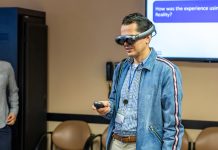Companies know that the quicker they can get their teams to adopt new technology, the faster they’ll be able to reap the benefits of increased productivity, better customer service, higher sales, and smarter decision-making.
But getting a whole team on board with new tools isn’t always easy. Invariably, some will welcome change, but there also will be those who prefer to stick to the old way of doing things.
Then there are those whose experience with technology is limited. For these employees, tailored and effective training becomes key. Studies show that good training can increase employee productivity and retention, and when you’re onboarding employees whose knowledge of tech is scant, it’s essential they learn without fear and intimidation. By showing them how new technology will make their work lives easier and more productive, they will learn to understand its value and adapt quicker.
We have found that by making these three steps part of your training, you can get the technology-uninitiated on board with relative ease.
1. Take a Multi-Faceted Approach. Many companies take a one-size-fits-all approach to training. But just as every person learns differently, no one person receives, retains, and embraces training in the same fashion. There will be those who thrive in a creative environment, while others who prefer structure and process.
There will be the “Show Me” learners, who learn best through visual demonstration; “Do It With Me” learners, who need a face-to-face opportunity to see the training materials in person, and the ability to ask questions of an in-person facilitator; and the “Let Me Do It” learners who thrive on exploring the new technology by themselves at a comfortable pace. Obviously, holding three different training sessions is costly and time-consuming, so the best training is done with a blended learning approach.
For example, we start with a walk-through of the technology, with a visual of the system shown on a big screen for the “show me” learners. Then we walk them through the process on their own devices for the “do it with me” learners. Finally, for the “let me do it” learners, we provide time to explore the new system on their own.
2. Make It Applicable. Whether you’re teaching employees to create a basic Excel spreadsheet or to use a sophisticated customer relationship management (CRM) system, your employees need to have a stake in the game. They need to know how the new technology will benefit them personally. There are many ways to achieve this. Start by using authentic true-to-life systems, with actual data applying directly to their role within the company.
Incorporate authentic scenarios and demonstrate how the technology applies to each scenario. Training employees based on a “day in their life” will center any learning development around actual practical usage of the technology.
Personalizing the software will provide your tech-inexperienced employees a sense of comfort in adapting to change. For example, if they are department store customer service reps training to use a point-of-sale (POS) system, include inventory available in-store and devise possible authentic scenarios the employee might encounter when using the software. Similarly, if they are new sales reps training on routing software, include actual streets and places of business in the area where they work.
We use what we call “training in production,” which means during training, employees have access to the exact system they will use after training. Once they complete the learning initiatives, we reset their production environment so they can maintain everything that is 100 percent unique to them. Not only does this help authenticate the training experience, but once they begin using the software on the job, they have all of their data in a recognizable format.
3. Simplify, Simplify, Simplify. Employees starting on a new technology may face a lot of uncertainty. If the training seems highly complex and deeply unfamiliar, their ability to adapt can shut down. This is especially true for those uncomfortable using new technology to begin with.
So simplify the process. Remember, the technology language the experts in the field use will seem like a foreign language to newcomers. So once you have written your training lessons and developed your documents, re-read them. Ask a non-tech employee to review and point out words or phrases that are complicated and not understandable by the everyday user. Then go back and rewrite.
Then, build off what your employees already know. We call this “scaffolding”—taking prior knowledge and building on its foundation. Start with something familiar—such as how to use a smartphone—and demonstrate how those basic concepts apply to the new tech. Once they see similarities they are comfortable with, it is much easier to introduce the next layer of knowledge.
Finally, once the training is over, it’s important to keep open the lines of communication and continually review and revisit your training plan, especially if you find some employees are still struggling with some concepts. Employees need to feel confident in their ability to succeed. Spending time on proper training and follow-up reinforces this principal, and ultimately lowers a company’s path to value.
Thomas Buckley is the CEO of StayInFront, a leading global provider of mobile, cloud-based field force effectiveness and customer relationship management solutions for consumer goods and life sciences organizations.




